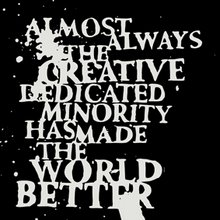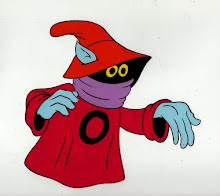
Here is an interesting article I found about a famous and well respected Artist. For me a Genius; Signore Leonardo Da Vinci!
Very few artists other than Leonardo appear to have felt a life-long need to articulate their ideals of beauty in drawings, along with seemingly endless variations on the theme of supine ugliness, and certainly none did so with comparable persistence or coherence of vision. As the great master's words intimate, 'beauty (bellezza) and ugliness (brutteza) appear each more powerful when seen in contrast, one with the other'. (1) In his conception of the 'ages of man', Leonardo would often juxtapose the ideally perfect beauty of youth with the grotesque deformity and decay of old age, because--as he inscribed below the sketch of an old hag--'a beautiful thing that is mortal passes and does not last'. (2) Between the late 1480s and the late 1490s, Leonardo's preoccupation with the human face (its proportions, expressions, and deterioration with age) resulted in especially penetrating physiognomic studies, and the sum of these drawings--which are notably heterogeneous in style and medium, for here one needs to think broadly about content, and include, for example, the pen and ink grotesque heads, as well as the chalk studies for the apostles in the Last Supper--appears to indicate that Leonardo had arrived at highly cogent, unified theories about gesture, some of which he probably covered in his lost treatise on painting and human motion. (3) In his role as a theorist of painting, Leonardo repeatedly stated that the two most formidable challenges facing the good painter were the portrayal of man and the intentions of the mind; in his lost Libro A of 1508-10, he had variously called the latter the 'passioni dell'anima', the 'accidenti mentali', and the 'moti mentali', and the very eclecticism of his vocabulary seems to indicate that he was both relying on different sources and returning to his own previous ideas, the earliest of which he may have formulated in 1490-92. (4) It is clear, therefore, from both his drawings and writings that the concern with the physical and psychological dimensions of gesture was a lifelong preoccupation.
A memorable and groundbreaking exploration of this aspect of Leonardo's work was provided in the recent exhibition, 'Leonardo da Vinci: The Divine and the Grotesqque', selected by Martin Clayton from the unparalleled holdings of the six hundred or so Leonardo drawings at the Royal Library, Windsor Castle. (5) As a scholarly contribution to the vast field of Leonardo studies, this exhibition was remarkably innovative in conception, and treated the material with extraordinary intellectual elegance. It displayed a number of drawings by Leonardo that have either not previously been exhibited, or very rarely so (for example, nos. 10, 11, 23, 49, 57, 67, 68-70, 75), and made the kinds of imaginative visual connections across themes that very much embody Leonardo's own method of drawing by analogy and permutation. The exhibition brought together seventy-six drawings (one, hors catalogue, RL 12576) that were arranged in eight sections designed to highlight the various dimensions of Leonardo's thought. In this regard, the visual experience of the display may have had a greater clarity of structure than the fine, accompanying scholarly catalogue. A monumental sheet in pen and ink of around 1478 (no. 1), portraying ideas for a nursing Madonna and Child with the infant St John the Baptist, along with numerous sketches and doodles of heads of men, women, and animals in profile, served as a centrepiece of the exhibition; it helped illustrate in germ form many of the recurrent themes in Leonardo's work over the next forty years of his career. An introductory section of thirteen drawings (nos. 2-14), entitled 'The divine body', cast a wide conceptual net over a great diversity of endeavours. (It is worth pointing out that 'divine' is not a term Leonardo himself used in describing physical beauty or bodily perfection.) Here represented were Leonardo's exploratory drawings of the body, whether human or equine, and these also included a variety of different drawing types (studies of anatomy, proportion, and of purely artistic intent). Although it perhaps wove together a few too many strands with an insufficient number of examples, this section on the 'divine body' provided, nevertheless, an entirely necessary springboard for the more integrated display of drawings that followed of Leonardo's ideal types of women and men, of bodily and facial expression (as was magnificently evident in the studies for the apostles in the Last Supper), of grotesque facial deformity, of portraits, and of the magical transformations from real to imagined creatures. A section on 'Fantasy and costume' (nos. 62-75), which included a number of Leonardo's designs for courtly spectacles, provided an arresting finale for this well-thought-out exhibition.


No comments:
Post a Comment